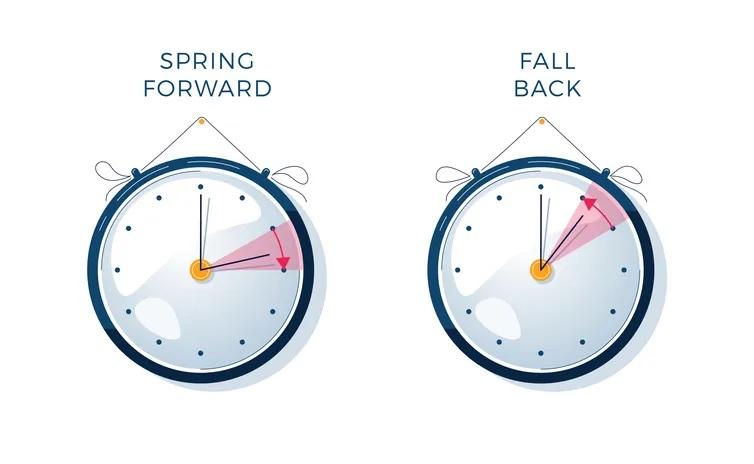On November 6th, we will be setting the clock back to Standard Time (ST) for the last time. The first Sunday in April of 2023, we will permanently change our clocks to Daylight Savings Time (DST).
Or maybe not so permanent. When Congress passed the Sunshine Protection Act in 2022, I was thrilled. I have yet to meet anyone who likes the time zone switches, especially parents. When I ran a global team, it wreaked havoc on our meeting schedules. Countries in the Southern Hemisphere had opposite DST’s and all countries set DST’s on different dates.
But how and why did we get time zones in the first place?
Short answer: train and ship schedules. Prior to the 24 time zone concept; cities, countries, states, could set their own time. Many used sunrise and sunset to set their time; allowing time to vary by minutes between countries and towns. At one point, there were over 300 local times in the US. Planning the time that a train would arrive, required knowledge of each town’s time. Imagine how confusing that would be!
Transportation industries desperately needed a resolution. In 1878, Sir Sanford Fleming, a Canadian engineer, proposed the use of worldwide time zones. The earth rotates 15 degrees every hour, or 360 degrees in 24 hours. So, Fleming divided the world into 24 time zones that were 15 degrees of longitude apart. It was such a brilliant idea that it was quickly adopted, and the US trains were trying to implement this system as early as 1883.
The International Meridian Conference of 1884 was convened in Washington, DC to set international time standards. They adopted Fleming’s model. They set the prime meridian for longitude and timekeeping at the Greenwich Observatory in the UK and Greenwich Mean Time (GMT) as the world’s meridian and time standard. They set boundaries for the 24 time zones as well as the International Date Line.
But why was Greenwich selected? (Actually, there are two meridians in Greenwich, but you need to visit it to understand it.) Because the Greenwich observatory provided the most accurate data and Britain ruled the influential shipping industry.
While many US states and towns adopted time zones compatible with the Fleming’s model in 1883, there were too many discrepancies. To set a United States standard, Congress passed the Standard Time Act of 1918. This act set the time zones for each state.
There is a universal standard for time zones, but it doesn’t mean countries must use it. Some countries use half hour or quarter hour time zones, including, Iran, India, Afghanistan, Nepal, Sri Lanka, Myanmar, and certain parts of Australia. A few countries, China and India being the largest, use a single national time zone. It is particularly onerous in China, which spans five time zones.
I mistakenly believed that time zones and DST were sacrosanct in the US. But Congress and US Presidents have made 8 changes to DST and DST/ST (Daylight Savings Time/Standard Time). The first, was in the 1918 Standard Time Act which implemented time zones and set a time period for DST/ST schedule. The DST/ST switch was so unpopular that it was repealed in 1919. During WWII, Roosevelt instituted year-round DST (called War Time) from 1942 to 1945.
From 1945 to 1966 there was no federal law for DST/ST, so localities could choose when it began and ended. Not surprisingly, it resulted in a complicated patchwork of DST/ST policies that varied in length and by location. In 1965, 18 states observed DST/ST for six months each year, 18 states allowed cities or towns to set their own DST/ST and another 12 states didn’t implement DST/ST at all. It was so crazy that portions of North Dakota and Texas created a reverse DST/ST, basically setting their clocks back an hour instead of moving them forward.
The beleaguered transportation industry intervened again and in 1966 Congress passed a law which mandated the implementation of DST/ST and set dates and time (2 AM). It allowed states to exempt themselves, but only if the entire state did it (Arizona and Hawaii never implemented DST/ST.)
During the 1973 oil crisis, Congress enacted year-round DST from 1974 to 1975. It was unpopular with parents who were concerned about children boarding busses in the dark morning hours. After a serious school bus accident, Congress rescinded full-time DST. In 1986 and 2005 Congress changed the dates for implementing DST/ST.
Which brings us to 2022, where Congress has, yet again, implemented permanent DST. I hope this time that it sticks.
Some interesting facts. It is widely believed that DST/ST was instituted for farmers, in fact, farmers have always opposed DST/ST. Parents, for the most part, have decided that permanent DST is better than the havoc that changing times has caused. Today the only opponents are sleep institutions who prefer permanent ST instead.
So, what did I learn from this inquiry? Well, I had mistakenly believed that time zones, DST, and ST were very difficult to change. I was unaware how fluid it has been. I was surprised how some countries do not follow the international standards. So international time zones be damned, we can adopt permanent DST. And as write this at 6:30 p.m. it is still light. I hope this time that our switch to DST lasts.
Angela Rieck, a Caroline County native, received her PhD in Mathematical Psychology from the University of Maryland and worked as a scientist at Bell Labs, and other high-tech companies in New Jersey before retiring as a corporate executive. Angela and her dogs divide their time between St Michaels and Key West Florida. Her daughter lives and works in New York City.



Write a Letter to the Editor on this Article
We encourage readers to offer their point of view on this article by submitting the following form. Editing is sometimes necessary and is done at the discretion of the editorial staff.